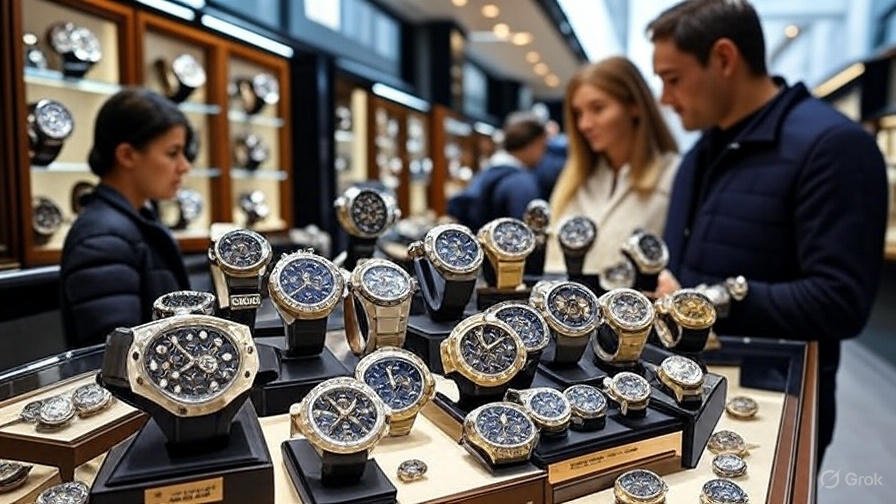In the ever-evolving world of luxury timepieces, Hublot stands as a beacon of innovation and craftsmanship, celebrated for its “Art of Fusion” philosophy that blends traditional watchmaking with cutting-edge materials. However, alongside the Swiss brand’s meteoric rise in popularity, a parallel market for Hublot Replica watches has surged, drawing both fascination and controversy. As demand for affordable alternatives to high-end watches grows, the replica industry faces increasing scrutiny over quality, ethics, and legal implications.
The Appeal of Hublot and Its Replicas
Hublot, founded in 1980, has carved a niche in the luxury watch industry with its bold designs and innovative materials, such as scratch-resistant Magic Gold and vibrant ceramic hues. Collections like the Big Bang and Classic Fusion have become symbols of status, worn by celebrities, athletes, and business moguls alike. However, with authentic Hublot watches often priced in the tens of thousands of dollars, many consumers turn to replicas to capture the aesthetic without the hefty price tag.
Replica watches, crafted to mimic the appearance and sometimes the functionality of their authentic counterparts, have gained traction among those seeking luxury on a budget. High-quality replicas often use materials like stainless steel, ceramic, and sapphire crystal, paired with Swiss-made or Japanese movements to emulate the precision of genuine Hublot timepieces. The allure lies in their affordability, allowing enthusiasts to sport a luxurious look without draining their savings.
A Booming Yet Controversial Market
The replica watch market has grown significantly, fueled by online platforms and global e-commerce. Websites like PyLuxury and United Luxury advertise Hublot replicas, particularly models like the Big Bang and Classic Fusion, boasting near-identical designs at a fraction of the cost. Some sellers emphasize the craftsmanship of their products, claiming meticulous attention to detail and high-grade materials. For instance, certain replicas feature diamond-encrusted bezels or sapphire cases, mirroring the opulence of Hublot’s originals.
Yet, this booming market is not without controversy. The production and sale of replica watches often infringe on intellectual property rights, raising legal concerns for luxury brands like Hublot. The Swiss watch industry, known for its stringent standards, has long battled counterfeiting, with brands investing heavily in anti-counterfeiting measures. Hublot, in particular, has emphasized its commitment to authenticity, warning consumers about the risks of purchasing fakes, which may lack the durability and precision of genuine models.
Ethical and Quality Concerns
Beyond legal issues, the replica market sparks ethical debates. Critics argue that replicas undermine the craftsmanship and heritage of luxury watchmaking, potentially deceiving consumers into believing they own an authentic piece. Moreover, the quality of replicas varies widely. While some high-end fakes closely mimic Hublot’s designs, others are poorly made, with subpar materials and unreliable movements. For example, low-quality replicas may use brass cases or lack proper engravings, making them easily distinguishable from originals upon close inspection.
Industry experts advise consumers to exercise caution when purchasing replicas. A 2021 guide from a replica watch site highlighted six ways to spot low-quality fakes, including checking for unpolished steel cases, unreadable dials, or missing Hublot logos. Reputable sellers, such as those claiming to use Swiss movements, aim to bridge the gap between affordability and quality, but consumers are urged to research dealers thoroughly to avoid scams.
Recent Developments in the Replica Market
In recent months, the replica watch industry has seen shifts driven by technological advancements and changing consumer preferences. Improved manufacturing techniques have enabled some replica makers to produce timepieces that are nearly indistinguishable from authentic Hublot watches, at least to the untrained eye. This has heightened concerns among luxury brands, prompting calls for stricter regulations on online marketplaces.
At the same time, consumer attitudes toward replicas are evolving. For some, owning a replica is less about deception and more about accessibility. Social media platforms have amplified this trend, with influencers showcasing affordable alternatives to luxury watches, normalizing their use. However, this has also led to increased scrutiny from authorities, with reports of crackdowns on counterfeit goods in major markets like the United States and Europe.
Hublot’s Response and Industry Impact
Hublot has responded to the replica market by doubling down on innovation and exclusivity. Recent releases, such as the Big Bang Unico Ice Bang and the Arsham Droplet collaboration with artist Daniel Arsham, showcase the brand’s ability to push boundaries with unique materials and designs. By offering limited-edition pieces, Hublot aims to maintain its allure among collectors who value authenticity and craftsmanship.
The brand has also strengthened its online presence, launching exclusive models on its e-commerce platform and partnering with high-profile figures like Novak Djokovic and Takashi Murakami. These efforts not only reinforce Hublot’s position in the luxury market but also serve as a counterpoint to the replica trade by emphasizing the value of originality.
For consumers considering a Hublot replica, experts recommend several steps to ensure a satisfactory purchase. First, research reputable sellers with transparent return policies and customer reviews. Second, compare prices to avoid deals that seem too good to be true, as they often indicate low-quality products. Finally, understand the trade-offs: while a replica may offer a similar aesthetic, it lacks the investment value and longevity of an authentic Hublot watch.
For those who prioritize authenticity, Hublot’s official website and authorized boutiques provide avenues to explore genuine timepieces. The brand offers digital appointments and in-person consultations, allowing customers to experience the craftsmanship firsthand. While the cost of an authentic Hublot remains high, its value as a collectible and a testament to Swiss watchmaking excellence is unmatched.
The Future of Luxury Replicas
As the replica market continues to grow, its future remains uncertain. Advances in manufacturing may further blur the line between replicas and originals, challenging luxury brands to innovate continually. Meanwhile, consumer demand for affordable luxury shows no signs of slowing, driven by economic factors and the desire for status symbols. The debate over replicas—balancing accessibility, ethics, and craftsmanship—will likely persist, shaping the luxury watch industry for years to come.
Hublot, with its bold designs and forward-thinking approach, is well-positioned to navigate this landscape. By staying true to its “Art of Fusion” ethos, the brand can continue to captivate enthusiasts while addressing the challenges posed by the replica market. For now, consumers must weigh their options carefully, balancing the allure of affordability with the timeless value of authenticity.
Conclusion
The rise of Hublot replicas underscores a broader tension within the luxury goods market: the desire for exclusivity versus the demand for accessibility. While replicas offer an affordable entry point into the world of high-end timepieces, they come with significant ethical, legal, and quality considerations. Hublot’s unwavering commitment to innovation and authenticity serves as a reminder of the value inherent in genuine craftsmanship. As the replica market evolves, consumers are faced with a choice—embrace the affordability of imitations or invest in the lasting legacy of an original Hublot. Ultimately, the decision lies in balancing personal values with the allure of luxury, ensuring that the timeless art of watchmaking continues to inspire and endure.
More information please visit FLASHSCORE.



